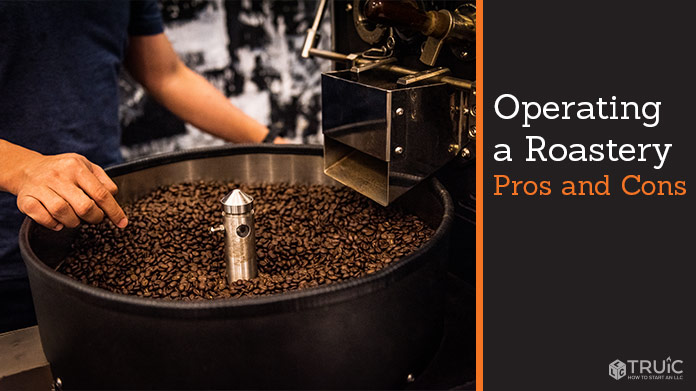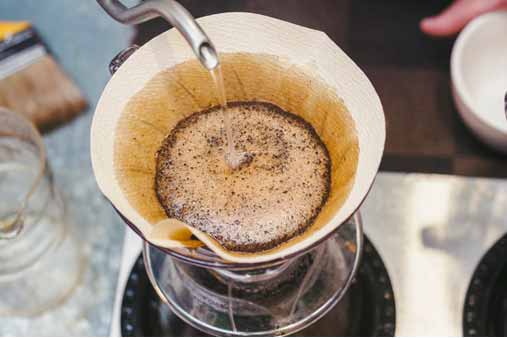Operating a Roastery: the Pros and Cons
Roasting your own coffee can make you a self-sustaining business owner with lower supply chain costs as you bypass the middleman for your key product. This approach also can help drive interest in your business before you even open your doors. Yet, running your own roasting facility also poses several challenges.
Recommended: Read our full, in-depth How to Start a Coffee Shop Business guides, inspired by coffee professionals, they will help make your coffee dreams real, from sourcing beans to hiring baristas, choosing the best POS system, forming an actual company, and everything in between.

Pros & Cons
Pros:
- Establishing your own roastery (or using a communal roasting space) gives you an opportunity to promote your brand more broadly before opening your cafe. Handing out free samples in the community — specifically in target areas for your shop — is one easy way to build interest. Potential recipients include local offices, retail businesses, churches, and community centers.
- Supplying wholesale accounts that want to serve or carry your coffee can boost your income alongside your cafe.
Cons:
- Securing a location for a roastery is more difficult than finding space for a coffee shop due to concerns about the sound, smoke, and other emissions commonly associated with such a facility.
- Roasting coffee well requires a certain degree of skill. If you don’t already have this expertise, it can take several years — as well as several thousand dollars — to achieve the necessary education.
If you decide that roasting your own coffee is the right path for you, you’ll need to source beans from either a farm directly or, more commonly, a coffee importer.
Let’s look at the basic aspects of running a successful coffee roastery.
Find a Space
Securing a facility to house your roasting operation requires more than simply finding a room big enough for your equipment. When looking at potential locations, be sure to assess each site’s tolerance for noise pollution as well as the smoke and other emissions commonly created by roasting operations. Other key considerations include access to power and enough space to house your equipment, package your beans once roasted, and then store your finished product.
Some cities have shared roasteries — communal spaces you can reserve, usually by the hour or on a weekly basis. This can be a helpful option as you start your roasting business, allowing you to postpone a major investment in both space and equipment.
In addition, communal roasteries typically offer more than just a place to roast coffee beans. Most include several types of roaster as well as sample roasters, weigh and fill equipment, “cupping” rooms to sample coffees, and space for packaging and storage.
To get a sense of what communal roasters offer, check out these examples:
Find Equipment
Roasting coffee requires the right machine for your business. Keep these key factors in mind as you evaluate different roasting machines:
Price:
Commercial roasters can range in cost from a few thousand dollars to tens of thousands based on the machine’s size and volume. When looking for a machine in your price range, be sure to consider:
- Your preferred coffee volume – Determine how much coffee you plan to roast and how frequently. Small commercial machines start around $3,000 while machines capable of roasting larger quantities, such as 25-kilo roasters, can cost nearly $60,000.
- Your future business growth – While you can always buy a larger machine down the road, consider purchasing a roaster that can accommodate your long-term needs — especially if you already have a growing customer base.
- Your available space – This may seem obvious, but take a realistic look at how big of a roaster your space can accommodate while still leaving room to package and store your product.
Features:
Every roaster is different. Based on your experience and personal preference, do your homework on which machine is right for you based on the features it includes and how well it meets the requirements of your location. For example, you should look for:
- Temperature probes, which help gauge air and bean temperature.
- Regulations on roastery emissions in your local area.
- Gas or electric models because gas-operated machines allow for greater control over your roasting temperature than electric machines.
- Whether or not your roaster includes an electric plug because you cannot simply plug some roasting machines into a socket. Make sure you understand the power source requirements for the machine you plan to purchase and if your location can support that.
Secure a License
Most states require coffee roasters to obtain a license, commonly called a certificate of occupancy, before operations begin. This process can take anywhere from a few weeks to several months, depending on your location, market saturation, and local regulations. The owner of the building that houses your roastery must obtain the certificate of occupancy, which means it’s up to your landlord if you lease space. Make sure you or your landlord secures this certificate before you set up your new roasting space.
While licensing requirements vary by your location and expected production volume, here are several common requirements in most states:
- Capacity of your roaster, as this impacts emissions
- Air flows through the roaster and cooler, as this also impacts emissions
- Emission calculations of your roasting operation
- Air stream temperature
- Temperature
- Times of occupation in the roastery space
You also may need to comply with pollutant restrictions in some locations, such as in large cities like Los Angeles or San Francisco. Check with your city officials for more information on specific requirements in your area.
Generate Buzz
Prioritizing your roasting business first gives you an opportunity to drive interest in your coffee and build a customer base before you open your first cafe.
Wholesaling your beans to cafes that share your creative vision or coffee technique is an effective way to promote your brand among target customers for your specialty coffee shop. Yet, success with this approach requires not only a high-quality product, but also solid client training. Because you’ll rely on other businesses to sell your product, you need to ensure they understand how best to promote your coffee. Developing your own training program for wholesale clients will ensure they can accurately represent your coffee in their cafes and address any customer questions. A built-in training program also is an attractive feature for potential wholesale customers, which can help you drive further growth.
This business model also can work well in reverse. If you choose to open your coffee shop first, you can serve another roaster’s products until you develop a loyal customer base interested in trying your own coffees. For example, Portland-based Never Coffee Lab started as a small cafe and later expanded into a wholesale roaster with accounts nationwide.
For a more in-depth look at this topic, check out our comprehensive guide, To Roast or Not to Roast: Deciding For Your Cafe.

